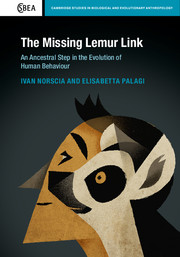Book contents
- Frontmatter
- Dedication
- Contents
- List of contributors
- A message from Jane Goodall
- Foreword
- Preface by the authors
- Acknowledgements
- Part I Communication: from sociality to society
- 1 Who are you? How lemurs recognise each other in a smell-centred world
- 2 What do you mean? Multimodal communication for a better signal transmission
- 3 A vertical living: sexual selection strategies and upright locomotion
- Part II How conflicts shape societies
- Part III Why lemurs keep in touch
- Part IV Closing remarks
- Looking back to the future – Michael Huffman
- Index
- References
1 - Who are you? How lemurs recognise each other in a smell-centred world
from Part I - Communication: from sociality to society
Published online by Cambridge University Press: 05 May 2016
- Frontmatter
- Dedication
- Contents
- List of contributors
- A message from Jane Goodall
- Foreword
- Preface by the authors
- Acknowledgements
- Part I Communication: from sociality to society
- 1 Who are you? How lemurs recognise each other in a smell-centred world
- 2 What do you mean? Multimodal communication for a better signal transmission
- 3 A vertical living: sexual selection strategies and upright locomotion
- Part II How conflicts shape societies
- Part III Why lemurs keep in touch
- Part IV Closing remarks
- Looking back to the future – Michael Huffman
- Index
- References
Summary
He approached these faces – even of those near and dear – as if they were abstract puzzles or tests. He did not relate to them, he did not behold. No face was familiar to him, seen as a ‘thou’, being just identified as a set of features, an ‘it’. Thus, there was formal, but no trace of personal, gnosis. And with this went his indifference, or blindness, to expression. A face, to us, is a person looking out – we see, as it were, the person through his persona, his face. But for Dr P. there was no persona in this sense – no outward persona, and no person within…His absurd abstractness of attitude…which rendered him incapable of perceiving identity, or particulars, rendered him incapable of judgment.
Oliver Sacks, 1970 (p. 13)Individual recognition: why and how
Human society is founded on individual recognition. The distinction of ‘others from others’ rules every aspect of a community, from the personal to the social level. In his ‘The Man Who Mistook His Wife for a Hat’, Oliver Sacks (1970) stresses how the ability to discern individuals is crucial to make a judgement over them and their true identity. Understanding individuals’ uniqueness is pivotal to choose partners and friends, care for family members, vote for a candidate, form political alliances, seal trade agreements, and follow rock icons or religious leaders. Individual recognition is not unique to humans. It is, instead, an ancient cognitive skill shared with other primates and rooted in humans’ mammalian history. From lemurs to apes, such ability is critical, for example, to select mates and supporters, form parent–offspring bonds, establish dominance relationships, set up coalitions, exchange or interchange commodities and follow group leaders (Thom and Hurst, 2004). Individual recognition is an excellent example of the cognitive continuity that bridges humans and other primates.
Individuals can be discriminated according to their unique features, or cues. Different from signals, specifically designed to convey information beneficial to the sender (Bradbury and Veherencamp, 1998), cues carry potential information whose relevance depends on the receiver. Paradoxically, the same cue can mean something for one animal and nothing for another which does not read the cue as a cue at all! Consequently, defining a cue is not easy.
- Type
- Chapter
- Information
- The Missing Lemur LinkAn Ancestral Step in the Evolution of Human Behaviour, pp. 3 - 29Publisher: Cambridge University PressPrint publication year: 2016

